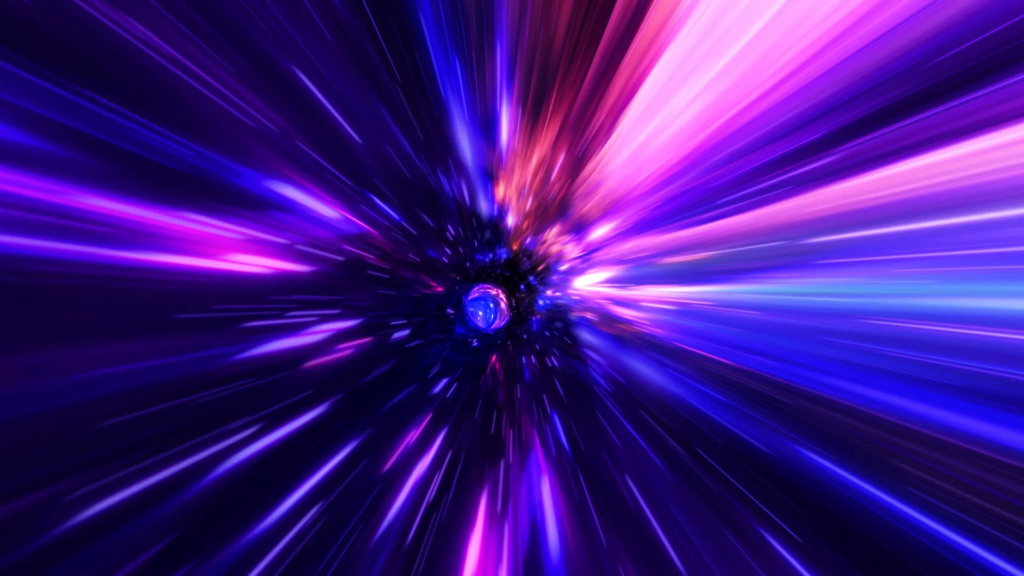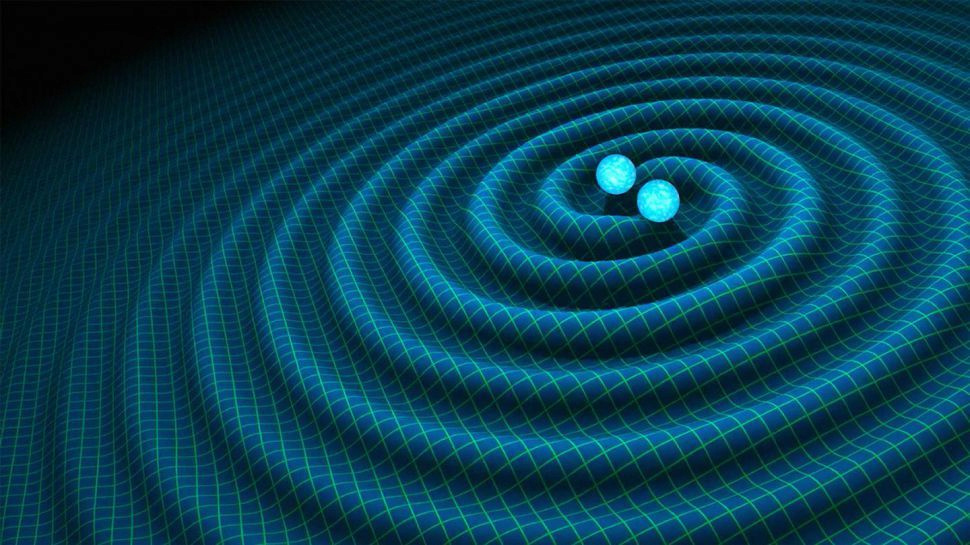?Did gravity turn into light at the dawn of the Universe

As incredible as it may seem, under certain conditions, a photon — an elementary particle without mass — can transform into another particle and its antiparticle, which do have mass. Inspired by this process, theoretical physicists tested the idea that a graviton, the hypothetical quantum of gravitational force, could also transform into other particles, particularly photons.
The standard model of particle physics, which describes all subatomic particles (elementary and compound), explains how they interact with matter — these interactions depending on their nature and their energy. Sometimes particles transform into each other through various processes; but the photon, the quantum of energy associated with electromagnetic waves, does not, because it has no mass — and therefore cannot, in theory, transform into a particle with mass.
Under certain special conditions, however, this becomes possible: if a high-energy photon passes close to an atomic nucleus, its energy can be converted into an electron-positron pair — that is, two particles having a mass — in a process called "creation of pairs”, which is the dominant mode of interaction of photons with matter. Based on this strange phenomenon, physicists from McGill University in Montreal and Jagiellonian University in Krakow have come up with a theory that gravity could also transform into other particles.
Much Stronger Gravitational Waves in the Early Universe
The theory of general relativity describes gravity as the manifestation of the curvature of space-time, itself produced by the distribution of the energy of the matter therein. But from the point of view of quantum physics, these oscillations of space-time, gravitational waves, can be interpreted as the propagation of a hypothetical elementary particle which would transmit gravity, called graviton, considered as the quantum of force gravitational. In theory, gravitons behave like any other fundamental particle and are therefore potentially capable of transforming into other particles.

A team of researchers set out to test this hypothesis, using "no physics beyond Einstein's standard model of particle physics and gravity," they say. To do this, they focused on the conditions of the early Universe, at the time when no structure existed (neither stars nor galaxies ) and when all matter and energy were grouped together in an extremely dense and dense volume. hot. Under these particular conditions, which date back more than 13 billion years, gravitational waves would have played a major role in the evolution of our universe.
Gravitational waves — predicted by Einstein in 1916 and first detected in 2015 — are typically very weak, with frequencies ranging from a few kHz to a few nHz. They are "capable of making an atom cross a distance less than the width of its own nucleus", specifies Live Science . A cosmic event such as a collision of two black holes results in a tiny displacement, of the order of 10 -18 meters, in the interferometric detectors. The physicists argue here that in the early Universe, these waves could have been much more powerful.
These primordial gravitational waves, emitted in all directions, would have amplified themselves, dragging in their oscillation all the matter in their path. This resonance effect would have favored the interactions between the different elementary particles and the formation of the first composite particles, followed by the first atomic nuclei.
Conditions conducive to greater resonance
But these waves could also have had an impact on the surrounding electromagnetic field, bringing this radiation to extremely high energies, even causing the spontaneous appearance of photons. “ Gravitational waves induce oscillating terms in the equations of motion for all matter fields. In the case of massless matter fields such as the photon, it is therefore expected that these gravitational waves can induce instabilities. These instabilities, in turn, will drain gravitational wave energy ,” the researchers explain.
The team reports that they have indeed seen a resonance effect according to their calculations, but in a vacuum, this is very weak: the resonance only occurs in the second resonance band and is therefore very inefficient. Moreover, due to the expansion of the Universe, gravitational waves are short-lived. On the other hand, in a medium where the electromagnetic waves would move much more slowly, the resonance could be much stronger, explain the researchers.

In other words, if the early Universe contained enough matter and was dense enough for the speed of light to be reduced, gravitational waves could persist long enough to generate more photons. Gravity could therefore have created light, significantly influencing all the formation of matter and the evolution of the Universe. “ Our result is a first step towards investigating the possible implications of gravitational wave conversion via parametric resonance in cosmology and astrophysics ,” the study authors conclude.
Source : websites

